A tiger's trip to Cleveland
Posted on Tuesday, September 26th, 2017
After several months of preparation - and several thousand miles - the Zoo welcomes Hector, an Amur tiger, from England
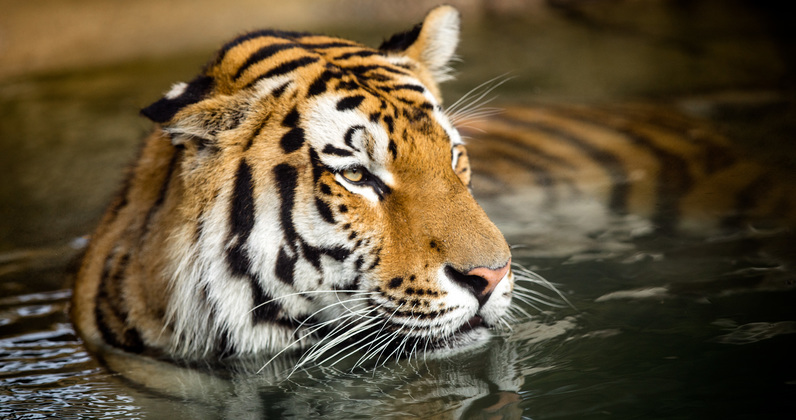
Whether shifting them between habitat spaces or transporting to other Association of Zoos & Aquarium (AZA) accredited zoos, every movement - even for the smallest amphibian or most mobile mammal - requires planning, training, timing and a little bit of luck. The Cleveland Metroparks Zoo animal care staff - the keepers, curators and veterinary team - manage many such moves each day.
But transporting a tiger? From England? That was a different story.
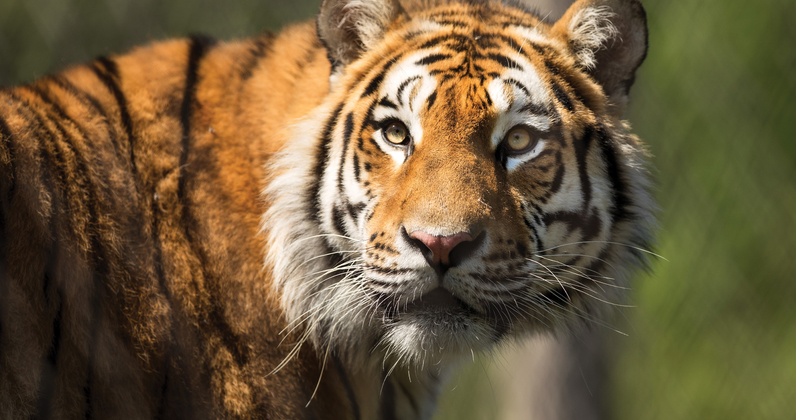
“This is the first time a tiger has been imported from the United Kingdom to the United States in a very long time,” said Associate Curator of Animals Mike Murray, who oversees the Wilderness Trek area of the Zoo. As in more than 25 years, and probably longer. “So we knew going into this that it’s a year-long process.”
Before that process even began, however, the Zoo worked with AZA to determine the best plan for bringing a new tiger to Cleveland.
Best for the species
The AZA maintains Species Survival Plans (SSPs) for more than 500 species, with the goal of managing and conserving a typically threatened or endangered species. SSPs coordinate the breeding and transfer of animals between AZA-accredited zoos to ensure a healthy and genetically diverse population.
The June 2016 opening of Rosebrough Tiger Passage created a new opportunity for the Zoo to breed tigers. The habitat includes several interconnected areas where individual tigers could be out on habitat without being together; it also includes a behind-the-scenes habitat for cubs. The Zoo’s two resident Amur tigers - female Dasha and male Klechka - are beyond reproductive age, so the curators worked with the SSP coordinator to determine how to set future breeding plans in motion.
“When Rosebrough Tiger Passage came on board, we asked AZA to set us up for a breeding recommendation in the future so we can contribute to this global population of tigers,” said Curator of Animals Travis Vineyard. “AZA said the best case scenario was to import a less genetically represented - a unique genetic animal - to the North American population.” Genetics and age are important to consider so the population in zoos remains healthy and able to breed. AZA also recommended bringing in a male tiger, since there are currently many more female tigers in zoos
in North America.
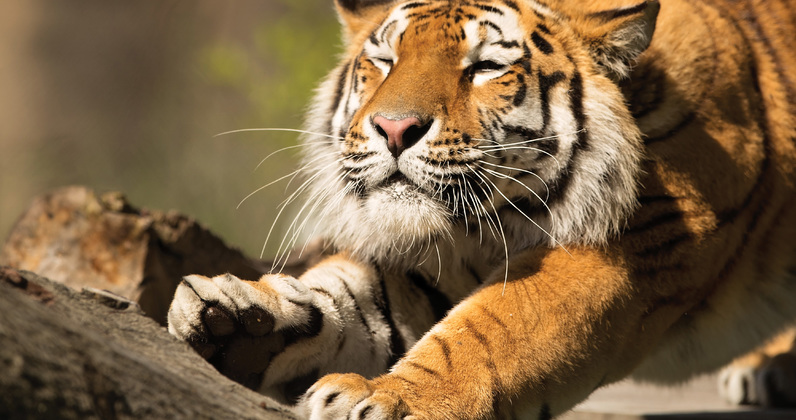
Like the giant panda, tigers are a globally managed population, so AZA began coordinating with its overseas counterpart, the European Association of Zoos and Aquaria, to determine which tiger should make the move.
Hector, then a 2-year-old male tiger at Yorkshire Wildlife Park in Doncaster, England, was the match.
Travel plans
The Zoo’s curators and registrar, Pam Krentz, began the permit paperwork months before Rosebrough Tiger Passage even opened, shortly after they knew that Hector would be the cat coming to Cleveland.
As registrar, Krentz maintains a database of thousands of details about animals currently in the Zoo’s care - from names and birth dates, to breeding lineages and where the animals came from or went. She also helps coordinate the paperwork that allows the Zoo to bring in new animals.
“Both countries needed to file permits,” said Murray. “England needed to get an export permit to say Hector could leave that country. We needed a permit from U.S. Fish & Wildlife Service (USFWS) that said he could enter here.”
The import also needed the approval of CITES, which stands for the Convention of International Trade of Endangered Species. Though not a governing body, CITES is a global agreement by a collection of countries that are working to limit commerce and trade of endangered species. Amur tigers are endangered in the wild; some estimates put the wild population at fewer than 500. One of the criteria for having the permit approved was that the zoo show a commitment to wildlife conservation. Cleveland Metroparks Zoo was one of the first in the nation to have an international conservation program, and its current Future for Wildlife partners are working to combat poaching and illegal wildlife trade in several countries around the globe.
The permits were filed in both countries, and to CITES, in June 2016 - the month Rosebrough Tiger Passage opened. Approval from all parties to bring Hector to Cleveland came in November 2016.
“While all of this is happening with the permits, we’re talking with people in the United Kingdom, getting a crate built, arranging the transport, choosing flight times and getting things in motion,” said Murray.
Cleveland’s animal care staff never traveled overseas. Instead, the shipment details were handled through hundreds of emails with Yorkshire staff and with the help of a broker. A broker is almost like a travel agent for the animal.
Anyone who has flown overseas - or even domestically - knows there are many details to coordinate when booking a flight. Hector needed a direct flight from England to the U.S., which meant traveling by crate (and truck) to London’s Heathrow Airport, about three hours from Yorkshire Wildlife Park. He also needed to fly into a major U.S. airport with a U.S. Fish & Wildlife office to be properly inspected - and arrive in time for the office to be open! And he needed to travel in a custom-built crate that met several international regulations. For months, the broker helped handle all of these details on behalf of the Cleveland Zoo staff.
“The broker is booking the ticket, getting the crate, getting it on the plane and coordinating the transport,” said Murray. “He is there seeing the animal go onto the plane, and we can be in Chicago the moment he arrives.”
Arriving in America
In March of 2017, Hector traveled in the cargo hold of a commercial United flight - direct from Heathrow to Chicago O’Hare. Attached to his crate was a carry-on bag of sorts that included Hector’s important information: a health record, pre-shipment veterinary paperwork, permit papers, emergency contact information and feeding instructions in case of emergency landing.
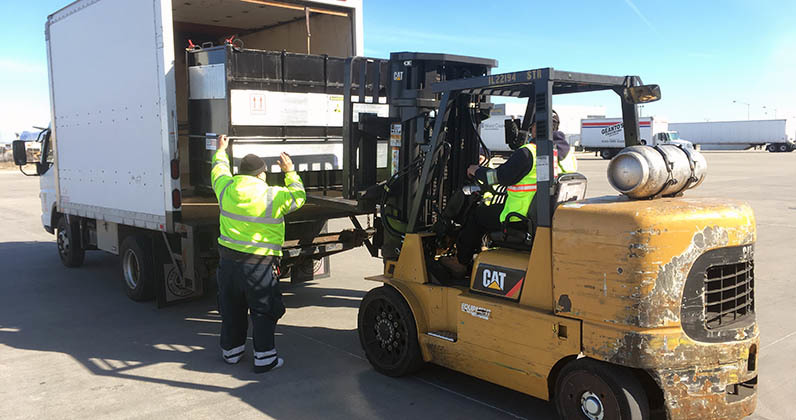
Shipping animals on commercial flights is common for all zoos, so the captain was aware and procedures were in place to ensure optimal safety for Hector and the passengers. (Hector did get bumped once by a shipment of military dogs that couldn’t be in cargo hold with a tiger. The stress of air travel, right?)
Murray and Vineyard drove to O’Hare to wait for Hector’s arrival. In Chicago, they monitored Hector as his paperwork was cleared by both the USFWS at the airport and the U.S. Customs office.
By now, Hector has been traveling for many hours but “he’s still pretty relaxed at this point,” said Murray. The keepers and animal care staff at Yorkshire had worked for months to make sure Hector was comfortable with the travel.
The Cleveland curators remained in touch with Yorkshire throughout the day.
“As soon as Yorkshire knew he was going to be shipped, they started crate training, so Hector was acclimated to a crate well before the travel,” said Murray. Crate training is a common practice and allows most animals to be moved without anesthesia or other drugs. It also creates a positive environment around the crate. The animal walks in voluntarily, is in a familiar environment and is rewarded for the behavior.
Amur Tiger Hector moves to new home in USA
The training benefited Hector during the flight, but also for travel before and after. Remember, Hector flew into Chicago and still had to get to Cleveland.
Murray and Vineyard left Chicago around 5 p.m. and began the drive to Cleveland. They had coordinated with colleagues at the Toledo Zoo and Chicago Brookfield Zoo, making them aware they were driving through town with a large carnivore. These zoos would also have been the point of contact if something went wrong during the transport, since the Cleveland’s veterinary team did not travel to Chicago.
“If something had happened when that tiger got off the plane, we would have called Brookfield and they would have been there to help,” said Murray.
(This is also common practice in zoos; the day of this interview about Hector, Murray and Vineyard know there is a warthog being transported through Cleveland by another zoo and they and the veterinary team are on call if needed.)
The drive back to Cleveland is uneventful, and Hector arrives at the Zoo around 2 a.m. to a group of awaiting staff. He began his time at Cleveland Metroparks Zoo in quarantine at the Zoo’s Sarah Allison Steffee Center for Zoological Medicine.
After more than 36 hours of travel and commotion, Murray said Hector left his crate cautious but calm. He was fed immediately and checked over, then left alone to spend his first night in America.
Since his May debut to the public, Hector has thoroughly explored Rosebrough Tiger Passage, a habitat that made this arrival possible. Having three non-related tigers would not have been possible with the Zoo’s former tiger habitat because of the lack of space and space complexity.
The tigers are still adjusting to each other. Klechka seems rather unfazed, but Dasha is acutely aware that there is a new, young male in her territory. And Hector?
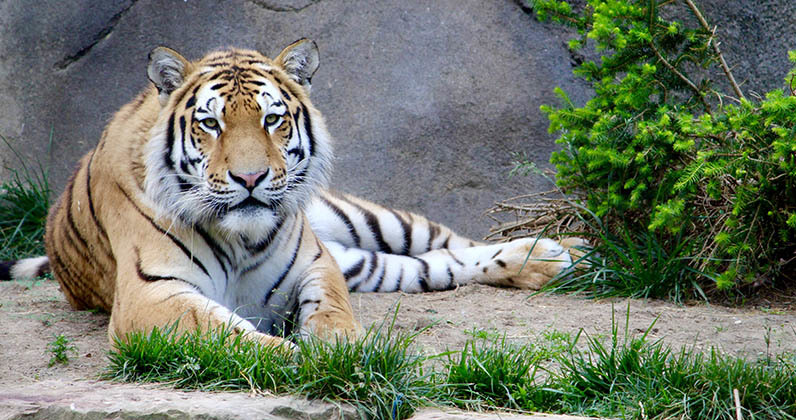
“He’s just a great animal,” said Murray. He’s relaxed, responds well to training and has become comfortable enough in his new home to nap in the overhead tunnels during a busy day at the Zoo and take a dip in the water.
“It’s a tremendous sense of accomplishment when it’s all done,” said Vineyard, and even more so when thinking about the larger purpose of maintaining healthy animal populations in zoos.
“Making sure these tiger populations are healthy is critical because all of us know that the wild population is so fragile,” said Murray. “Zoos working together is really, really important for this species and many others.”
By the Numbers: Hector's trip
3,640 Miles from Doncaster, England, to Clevleand
9 Typical flight time between London Heathrow Airport and Chicago O'Hare Airport
39 Total travel hours Hector logged before arriving in Cleveland





